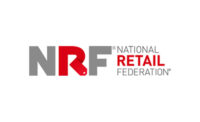How to Implement Continuous Improvement

Education is One Source’s largest business segment.





One Source Commercial Flooring was formed in the early 1990s initially in the carpet care segment and later added installation services as the company grew. During that time, company founder and president Scott Spencer began serving the K-12 sector where One Source found its niche and largest business segment. In 2003, after spending time in the corporate world, I joined my cousin Scott as partner in the corporation.
Our partnership is a blend of styles and strengths that complement each other. Scott is a classic entrepreneur and sales-oriented leader, where my contributions are in operations and processes. It has been fun for us to grow this business together reminiscent of our grandfather, granduncle and great-grandfather who ran a plumbing contracting business from 1909 until 1966.
The company has grown significantly over the past 14 years. We are now a much larger and well-known flooring company with a strong reputation in the K-12 education market. In 2003, we examined our business and created our mission, vision and value statements. Although this can seem cliché, it was important to us to determine what we wanted to do and how we wanted to do it. Today, these remain important documents, and we still refer to them when making strategic decisions about One Source.
Our next step was to create standard systems and processes to help us grow the company. We created a large flow chart to map everything we were doing to move a job through the company from sale to close out. It was this old map that started us on a journey of continuing to improve the process to scale up the company. With this in place, we could more easily identify process roadblocks and better see where we were doing a good job and where we were coming up short. By doing this, we could add standards to each part of the process so that each employee did things the same way. We added a better estimating software system and integrated our accounting and project management systems. We could describe our culture, and we added people that shared our will to win! Our people—this team—have created some great results over the last 10 years.
As the company increased revenue, we needed to carefully add staff, equipment, systems and space. We continued to refine, and when required, amend the overall work process and create a new and better current condition. This approach would guide resource addition as our growth continued. We did some Lean improvement on our estimating group. This group is integral to our process, and we felt that we were overloading them, which would affect quality and production. We measured everything we did. For example, we created spaghetti diagrams that showed how much time was spent walking to a printer; as a result, we moved the group to the far end of the building behind a glass door to minimize interruptions; and we tried to rid the new estimating current condition of non-value-added steps or actions. We created value-added work time and accurately state the weekly production capacity for this group as well as the average cost to the company to produce an estimate for our average size job.
As the size of One Source increased, we added a company “game plan” meeting on Monday and Friday mornings. This is a brief stand-up meeting that functions as a flow down, flow out information share—what is each group facing, what will happen this week, what do we need to do to prepare, and what does the field need to achieve the mission? I used this type of meeting in a prior work life, and it is based on a military style operations order briefing. It is very effective.
Because our largest business segment is education, the summer season is remarkably busy and we are destined as a group to meet this challenge each year. In the spirit of continuing to improve, we instituted an after-action review (AAR) meeting for the company. Each September, we gather the entire company and conduct a meeting that asks: what was expected to happen, what occurred, what went well, and why and what can we improve (and how)? This meeting is open, honest and focuses on results and process. We surveyed ourselves and our external customers. We collected as much metric data as possible and presented as close to a 360-degree assessment of how we did as a company as we could. As a group, we know more about our business performance than we ever have. We then selected several parts of the process that we agreed needed attention. Some items were easy to identify and create action. The larger process fixes required improvement teams (small, empowered to act, with completion dates). This year, those teams are in place, working to improve (and restate) parts of the One Source Master Process.
Prior to the improvement teams beginning their work, we referenced an instructional video called ‘Toast Kaizen,’ which is the Japanese word that means small change for the better! This video is the best I have seen to introduce (or re-introduce) basic continuous improvement and Lean principals and Kaizen. The goal is to remove things from our process that the customer does not want to pay for. We have learned that the One Source team members doing the work are most equipped to recommend the best way to improve it!
Our AAR is a huge help to continuing to improve. It helps us to think better as a team, it builds shared contextual awareness, and it helps to minimize interpretation and ambiguity. The AAR is used by the U.S. military and many companies use it. It is much more than a post-mortem, it is a way for an organization to learn from its experiences and improve. Construction is a high labor content, variable and often complex landscape where conditions change constantly. To this end, our organizational knowledge is always a work in progress, so collecting, creating and sharing this knowledge is the responsibility of everyone on the team and the AAR is one way to facilitate the capture of this information.
Currently, the team we have in place is the best we have ever had. They are a blend of styles, talents and abilities. We know that the growth, the strength of our brand, the awards on the walls and our customer loyalty are because of the professional, caring efforts of each member of the One Source team. We feel this way as a team, and we know that our customers feel this way because we asked them formally as part of our AAR. We are committed to continuing along the journey of continuous improvement because we know that we get better in our individual roles. As a result, we get better as a company, every year. We have come far as an organization since 2003, but continuous improvement is never complete, and we are always striving to create that next, improved current condition!
Looking for a reprint of this article?
From high-res PDFs to custom plaques, order your copy today!




.jpg?height=200&t=1729672015&width=200)






